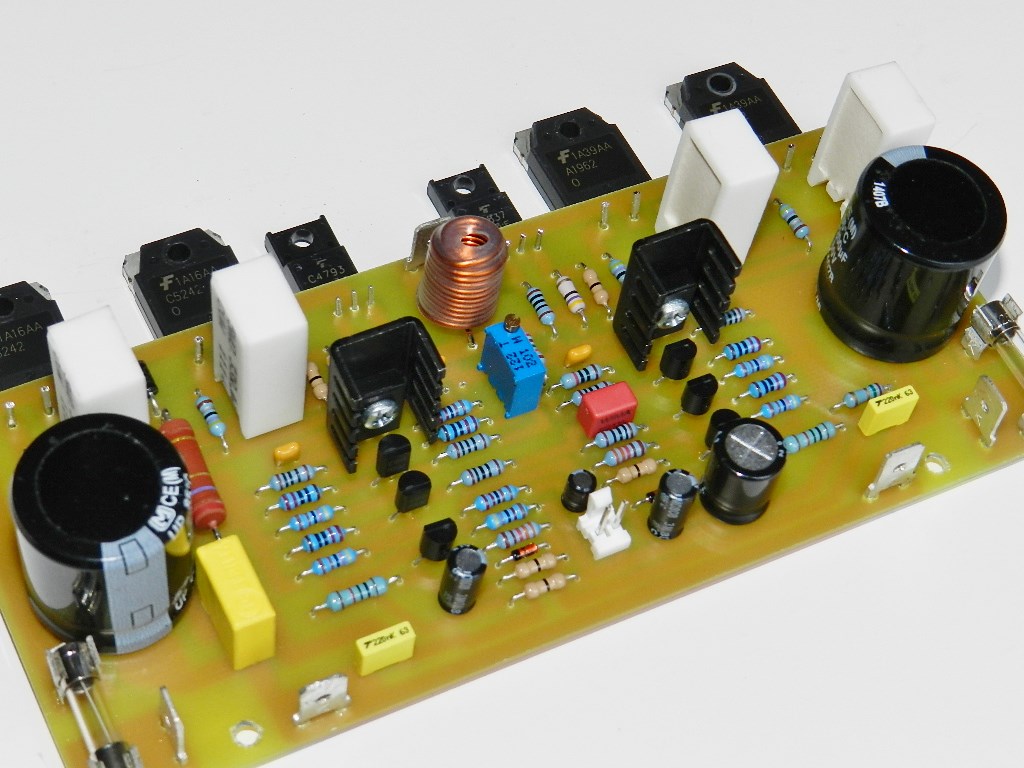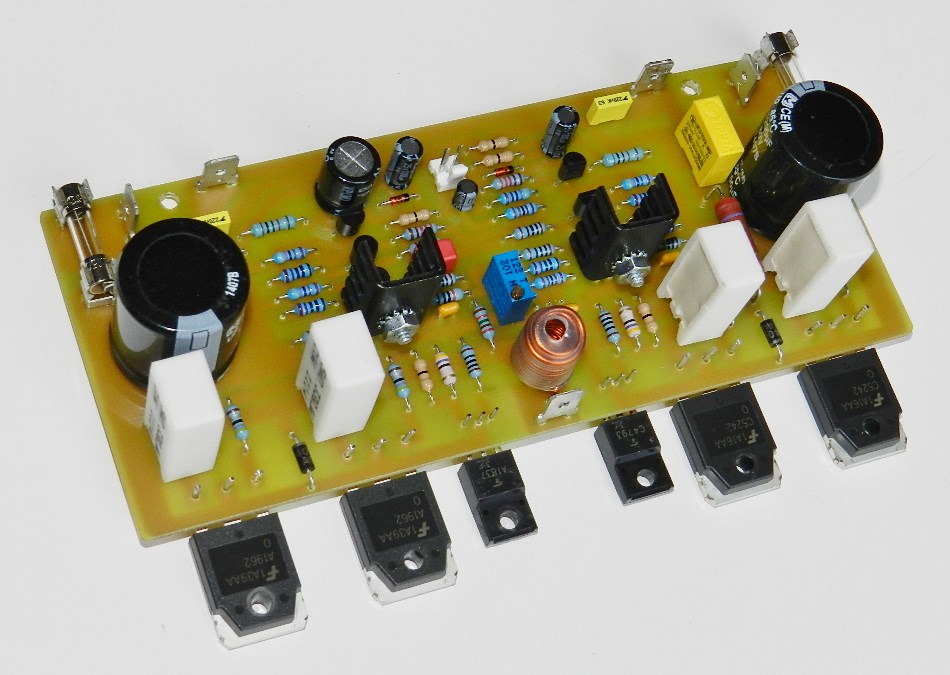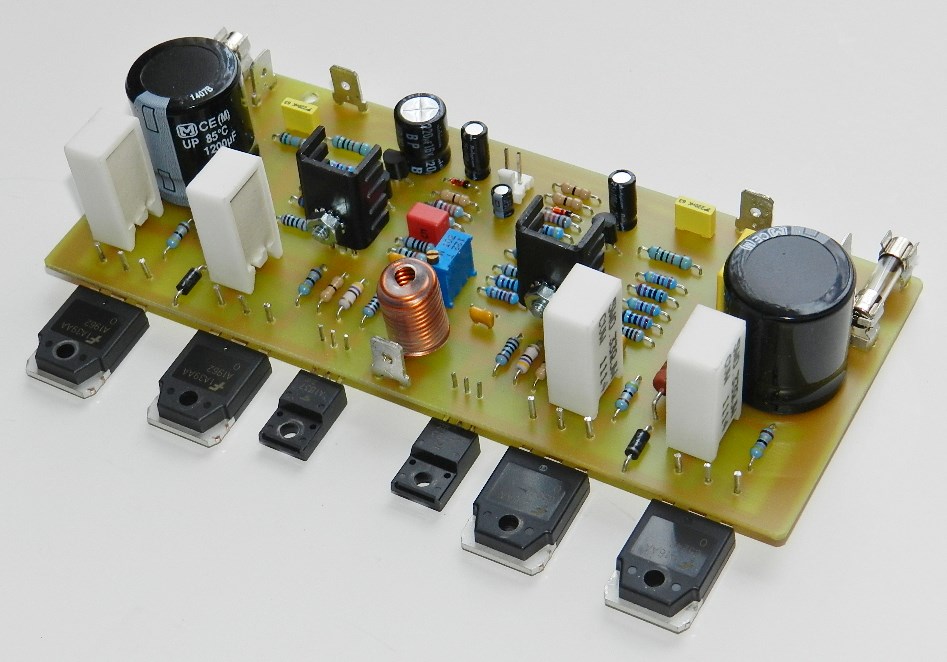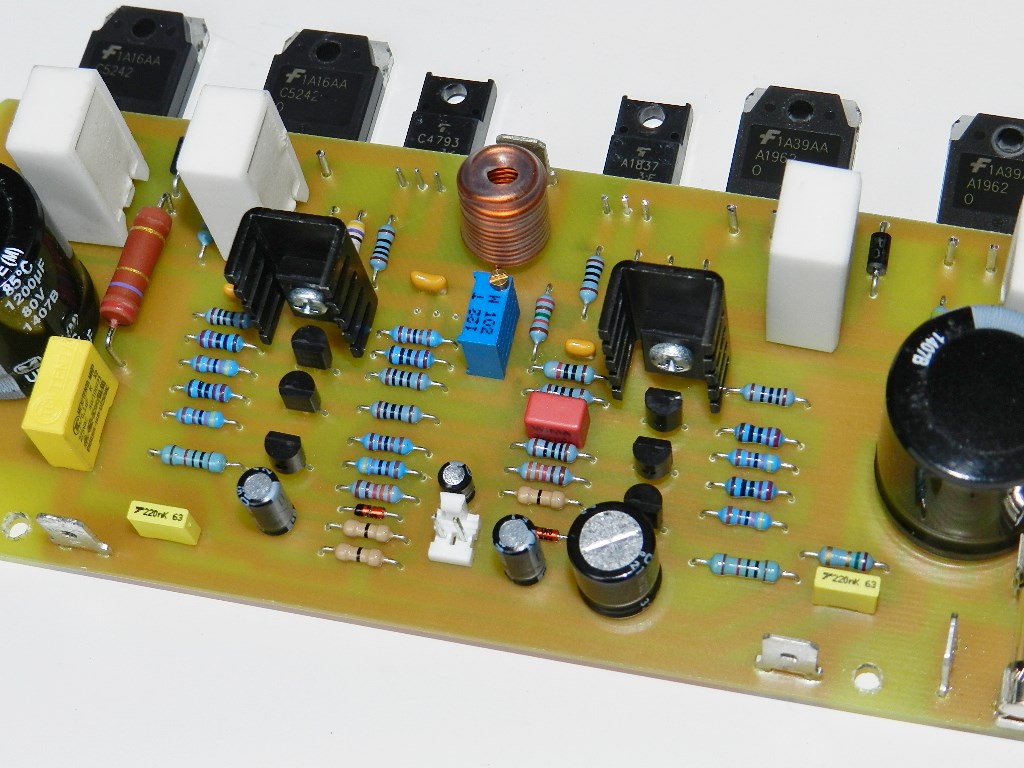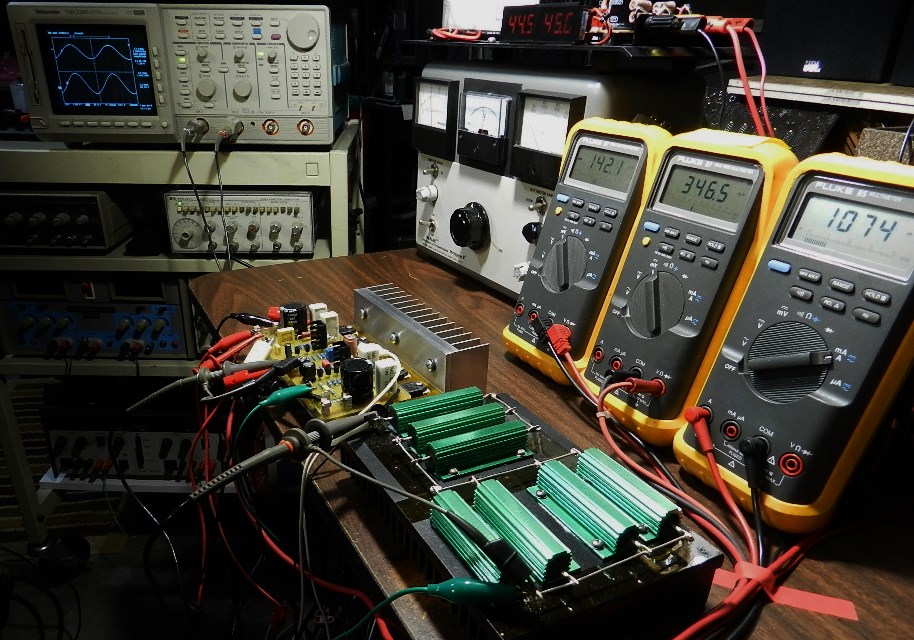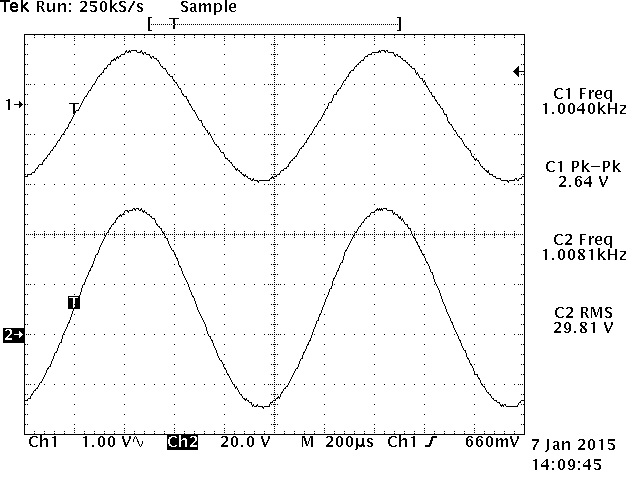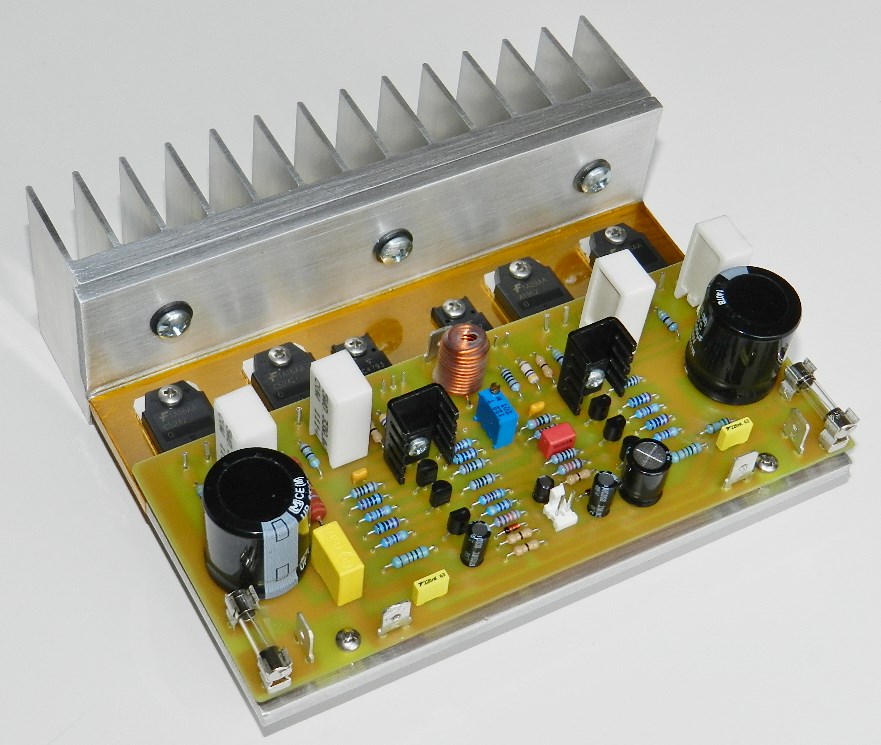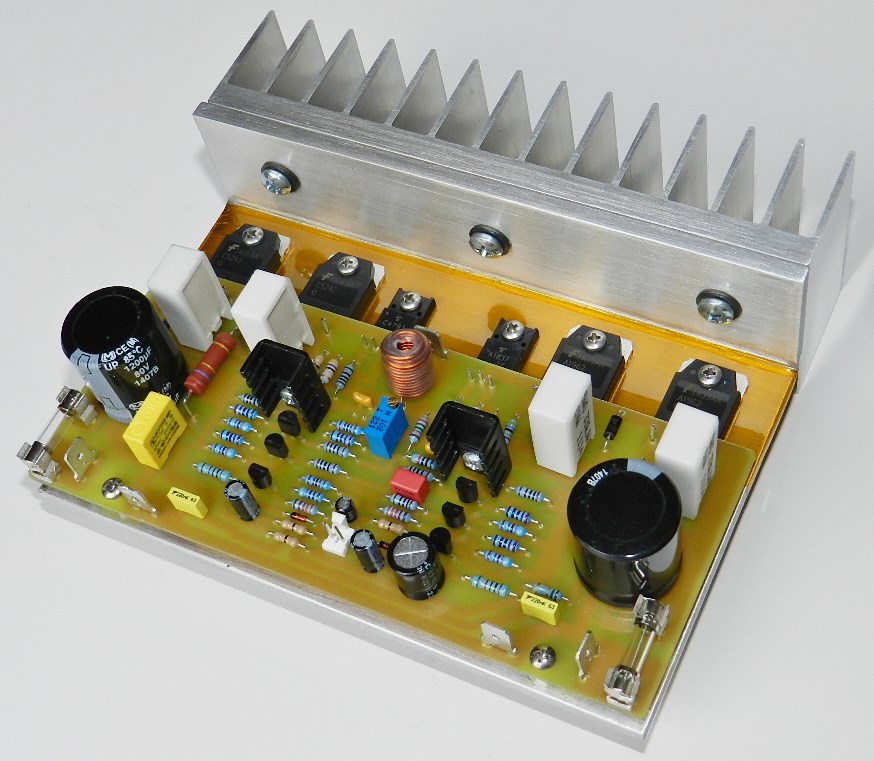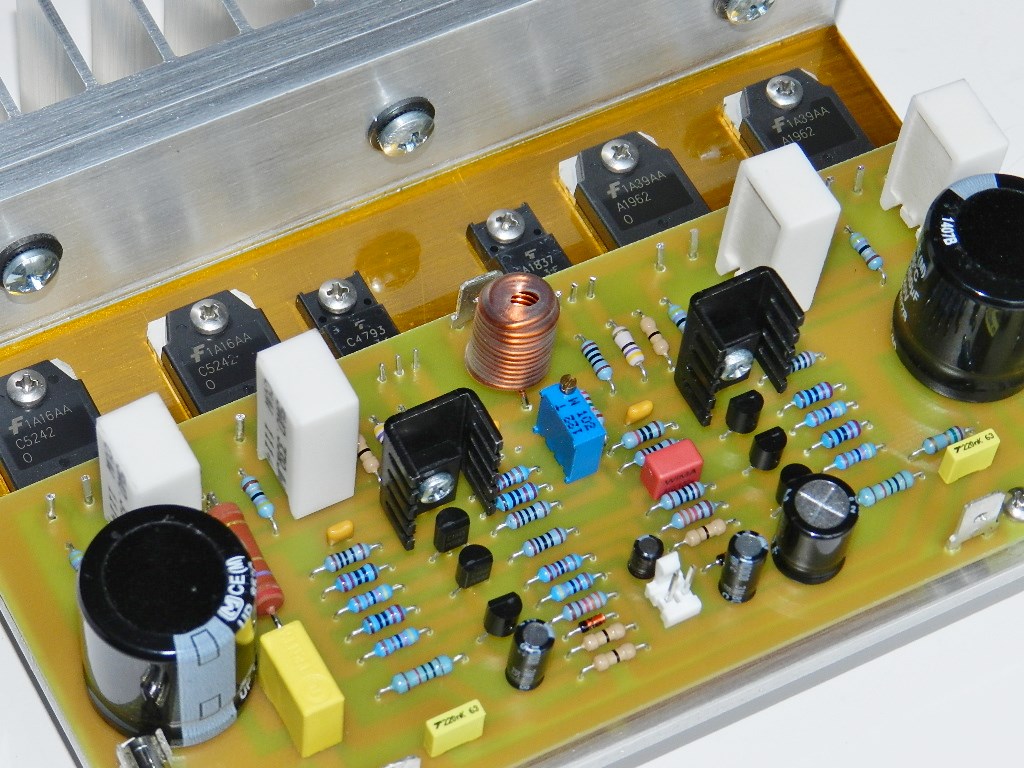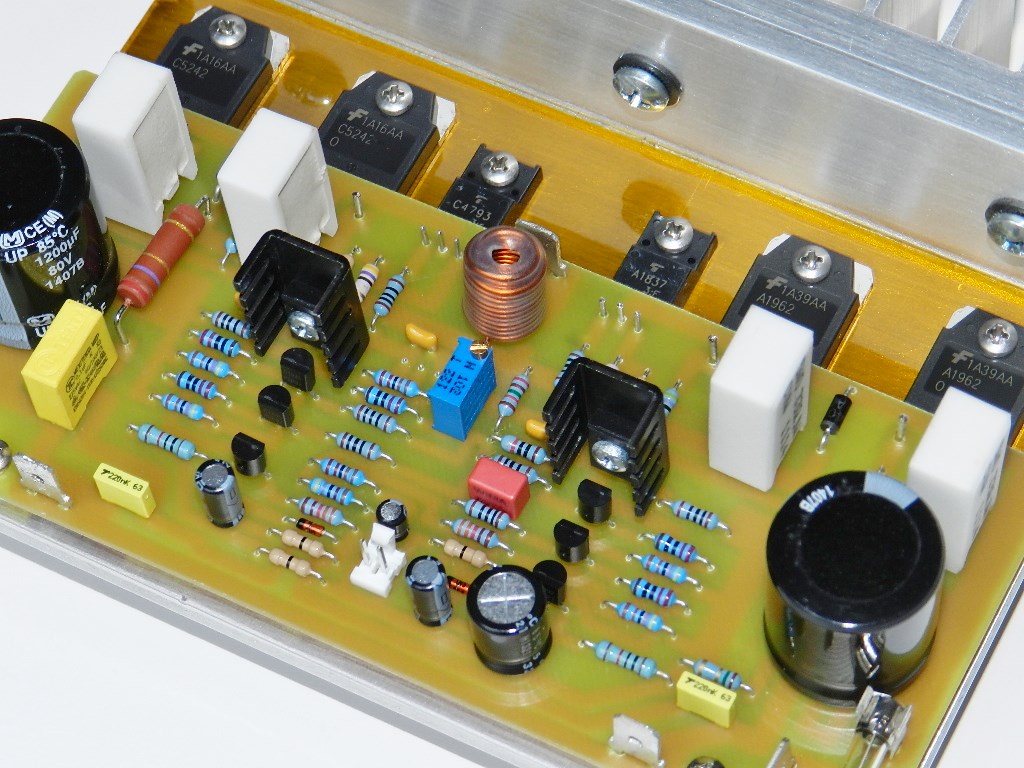Project 37
The concept for this project was presented previously utilizing power MOSFETs. Project 37 will use the same front-end circuit but this time the power output devices are the reliable Fairchilds’ 2SC5242/2SA1962. These complementary T03P packaged transistors are also available in TO264 package as a 2SC5200/FJL4315 at 150 watts, in a TO220 package as an FJP5200 at 80 watts and in a TO220F package as an FJPF5200 at 50 watts. All flavors have identical electrical characteristics, ratings and each package of course have their own complementary pairs. The measured power output for this project is more than 100 watts at 8Ω with a ±49VDC to ±55VDC power supply rails.
Please refer to the schematic diagram from here on. The front-end of the project consists of two differential amplifiers, Q1, Q2 and Q5, Q6 loaded by two current sources, Q3, D1 and Q4, D2. The current sources are adjusted to about 2mA and determined by the value of R8 and R9. The output of Q1 and Q5 are connected to the common-emitter configured voltage amplifier transistors, Q7 and Q8, high frequency compensated by C8 and C9. The outputs of the voltage amplifier stages are connected to the emitter-follower configured driver transistors, Q9 and Q10, by way of base resistors, R38 and R39. The output of Q9 and Q10 are connected to the power output transistors Q11 through Q14 in an emitter-follower configuration. The bias of the power output transistors is set by VR1 and Q9 at approximately 20mA. The gain of the amplifier is set by the value of R25 and R20 at about 27dB. An interesting feature of this project is the addition of CF1 in parallel with R20 and CF2 in parallel with R25. Both capacitors audibly improve the overall frequency response of the amplifier, as mentioned earlier in Project 34.
A modified LM49720 tone control preamp was mated with this project for the ultimate final test, to listen and judge. While playing “Run” and “Universal Traveler” from Air’s Talkie Walkie album on a Toshiba HD-A2 player and several speakers for comparison, deep bass was reproduced on the dual 15” speakers. With the same setup, but this time connected to Kenwood’s quad 12” 3-way speakers, spectacular clarity on the percussion was experienced while playing “Concord Jazz Sampler Volume 2” on hybrid SACD. For vocals, Diana Krall’s version of “The Look of Love” was played and it reproduces very clear and concise mids. Overall, Project 37 audibly performed well with details, but please note that some passive modifications were made on the PreAmp1 project. One thing you will notice in the music test is that there’s no power ON thump and the amplifier is very quiet during the pause between tracks, of course, it’s dependent on how noisy your pre-amp is.
If you are interested in building this project and have read the Information and Policies section of this website, the schematic diagram, PCB layout (available only by request) and BOM are free, as is, no warranty.
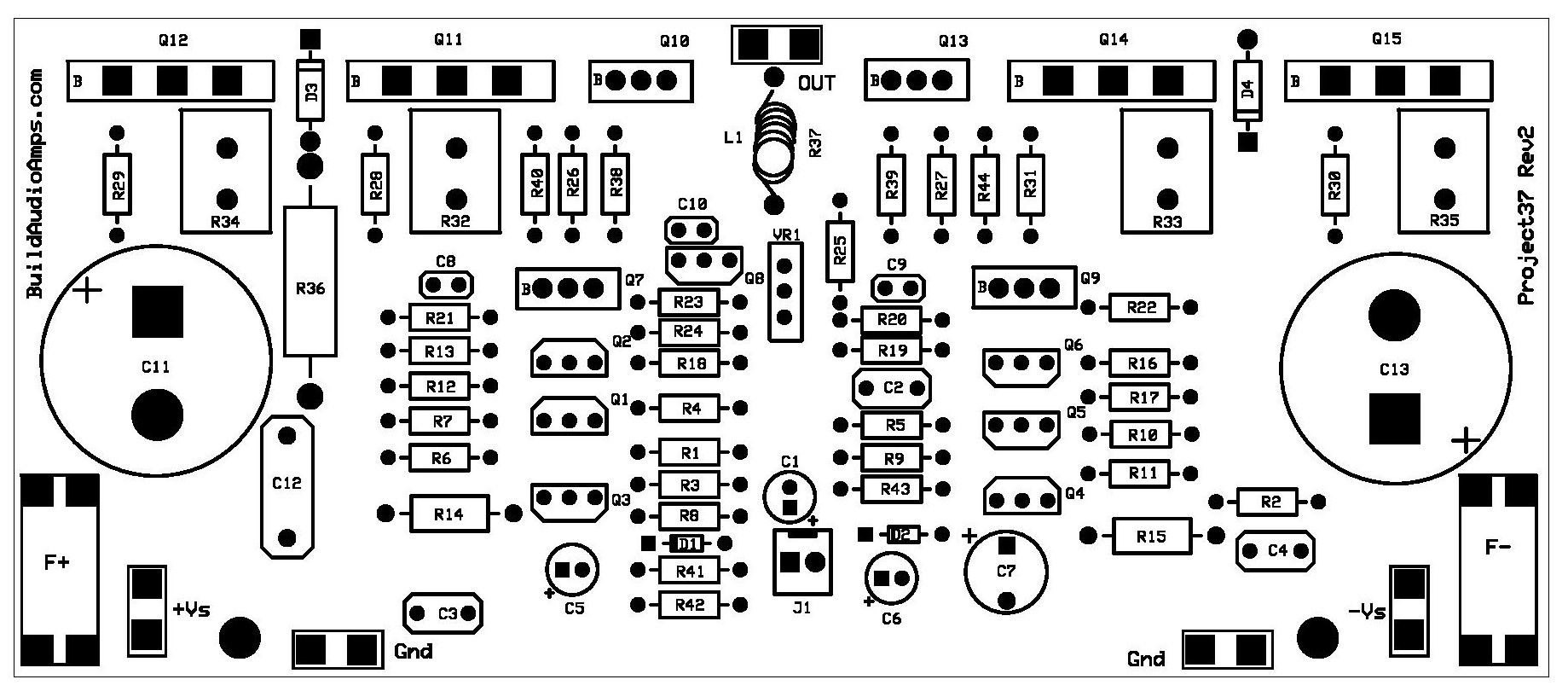
Project 37 Silkscreen Parts Placement Layer of PCB.
If you’ve decided to build this project, the idle current needs to be adjusted first before going any further. Insert a jumper or shunt at the input of the amplifier. Do not connect any load or loudspeaker at the output of the amplifier. Adjust VR1 for maximum resistance of 5KΩ; please refer to the schematic diagram where to access VR1 on top of PCB. Prepare 3 DMMs (experienced amp builders have more than 3 DMMs) to measure the DC offset voltage at the output of the amplifier, the voltage drop of the emitter resistor in any of the power output transistors, Q11 through Q14 and the overall current across the F+ fuse terminals. It is highly recommended to use a Variac transformer when performing the initial test of the project. If something goes wrong with the project, minimal damage will occur to the components or just a blown fuse. However both procedures will be explained with or without the use of a Variac transformer.
If a Variac transformer is available, connect the AC input of the power supply to the output of the Variac transformer. Switch the power to ON and gradually adjust the Variac’s AC output from zero until the voltage output of the power supply reaches approximately ±-49VDC to ±55VDC while keeping an eye on sudden increase in any DMM readings. If you have encountered an unusual increase in any of the DMM readings, switch the power to OFF immediately and check the PCB for assembly errors. The picture above shows a DC offset voltage at 4.7mV and this could be within +/-10mV. The voltage drop across any emitter power resistor is about 20.2mV; readjust VR1 to get a DMM reading from 10mV to 25mV after 10 minutes of warm-up time. The current across the F+ fuse terminals is 88mA; this value is dependent on the adjustment of VR1 and could be from 40mA to 100mA. If you obtain similar DMM readings, you may proceed with music test.
If a Variac transformer is unavailable, make sure that the power supply was properly built and that the output voltage rails have been measured at approximately ±49VDC to ±55VDC before connecting it to the amplifier project under test. With the power supply switched to OFF, adjust VR1 for maximum resistance. Switch the power supply to ON; the DMM measuring the voltage drop across any emitter power resistor should read less than 1mV. If the DMM reading is more than 1mV and cannot be adjusted by VR1, power OFF immediately and check the PCB for assembly errors. If the DMM reading is less than 1mV, adjust the reading from 10mV to about 25mV after 10 minutes. The DMM that is connected across the F+ fuse terminals will read about 40mA to 100mA of total current. If you obtain similar DMM readings, you may proceed with music test.
The next test procedure is optional, but if an oscilloscope, audio signal generator and 8Ω dummy load are available, the maximum power output before clipping can be measured. Be careful not to touch the project’s heatsink, it will get very hot during this test!
The power output was measured using an HP3312A Function Generator set at 1KHz 2.64Vp-p sine wave output and connected directly to the input of the amplifier under test as well as the CH1 test probe of the oscilloscope. An 8Ω/700Watt dummy load was connected at the output of the amplifier under test as well as the CH2 test probe of the Tektronix TDS520D 500MHz DPO. The power amplifier produces a very nice sine wave of 29.81Vrms across the 8Ω/700W dummy load or a power output of more than 100 Watts, as shown in the TEK hardcopy pictures above. The oscilloscope’s horizontal scale was adjusted at 200uS to verify for any visible clipping or artifacts on either peak. This project was paired with a modified PreAmp1 tone control project; the audio quality reproduced was exceptional.

